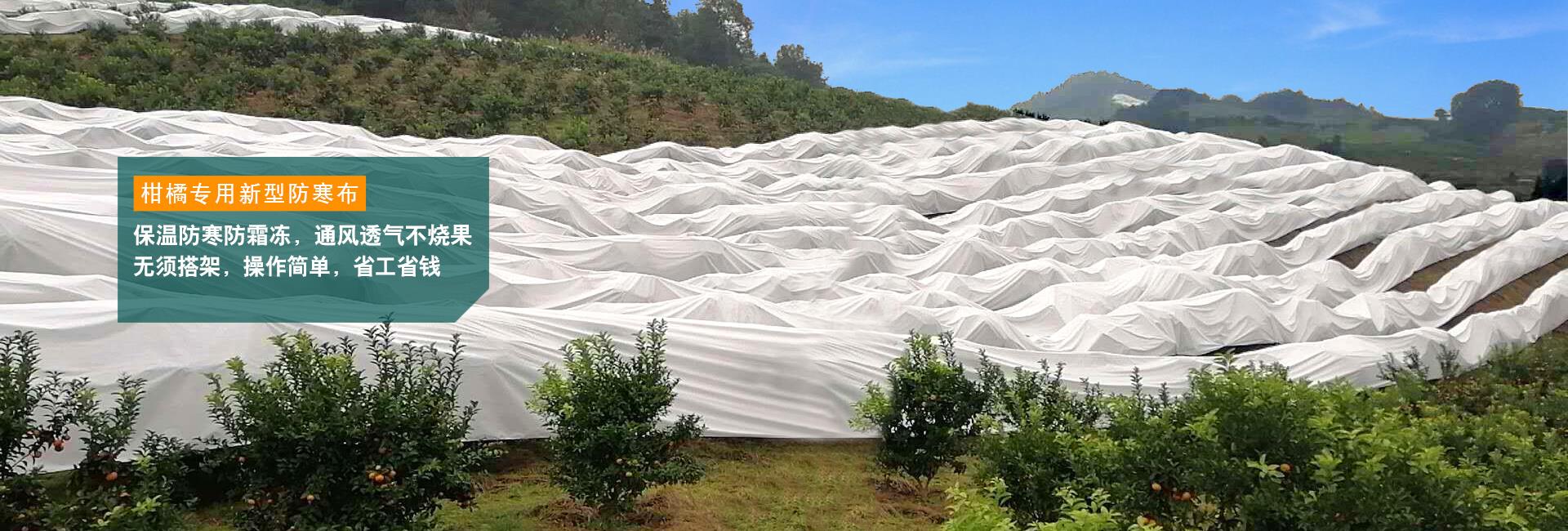Guangdong GCL Nonwovens Technology Co., Ltd.
Add: No. 39th Xingye Road, Heshun Gang industrial zone, Nanhai District, Foshan, Guangdong Province, ChinaTel: +86-757-85519325
Tel: +86-757-85601203Fax: +86-757-85629506
Email: service@synwinchina.com
Ai Nong Manufacturers explain what PP Nonwovens are
Nonwovens (English name: Non woven Fabric or nonwoven cloth), also known as Nonwovens, are made up of directional or random fibers. It is called cloth because it has the appearance and certain properties of the cloth.
Simply put: It is not interwoven and knitted together by a yarn, but the fibers are glued together directly through physical or chemical methods, so when you get the adhesion in your clothes, you will find that you can not pump a root of the thread head.
OnePP Non-woven fabricThe characteristics
Nonwovens are not theodolite, tailoring and sewing are very convenient, and light and easy to shape. Nonwovens break through the traditional textile principles and have the characteristics of short process flow, fast production rate, high output, low cost, wide use and many sources of raw materials.
Compared with textile cloth, the strength and durability are poor, and can not be cleaned like other fabrics. Because the fibers are arranged in a certain direction, it is easy to crack from the right angle direction and so on, so the improvement of the production method is mainly focused on preventing the improvement of the division.
TwoPP Non-woven fabricThe classification
Non-woven fabrics according to the different production process can be divided into:
spunlaced Non-woven fabric
is to spray high-pressure fine water into a layer or multilayer fiber network, so that the fibers entangled with each other, so that the fiber mesh can be reinforced and have a certain strength.
Characteristics:
1. Flexible entanglement, does not affect the original characteristics of the fiber, do not damage the fiber.
2. The appearance is closer to traditional textiles.
3. High strength, low pilling.
4. High moisture absorption, fast moisture absorption.
5. Feel soft, drape good.
6. The appearance of the pattern is changeable.
7. The production process is long and covers a large area.
8. Complex equipment, large energy consumption, high water quality requirements.
Product Applications: Medical curtain, surgical clothing, surgical cover cloth, medical bandaging materials, wound dressings, medical gauze, aviation rags, clothing lining base cloth, coating base cloth, electronic industry advanced rags, makeup cotton, wipes, mask coating materials.
Hot-fitting Nonwovens
It refers to adding fibrous or powdery hot-melt bonding reinforcement material to the fiber mesh, and the fiber mesh is reinforced into cloth by heating and melting cooling.
Characteristics:
Surface bonding hot-rolled surface is more smooth, point bonding hot rolling is relatively fluffy.
Product application: The production of baby diapers and women's sanitary napkin coating materials, ointment base cloth, clothing lining, masks and so on.
Pulp airflow into mesh non-woven fabric
can also be called dust-free paper, dry paper non-woven fabric. It is the use of airflow mesh technology will be wood pulp fiberboard open loose into a single fiber state, and then use the Airflow method to make the fiber agglutination on the net curtain, the fiber mesh and then reinforce into cloth.
Features: Good fluffy, soft feel, moisture absorption performance is super strong.
Application: Medical sanitary materials, especially high absorbent disposable sanitary products (such as diapers, sanitary napkins, wet face towels, wiping cloth, etc.).
Wet Non-woven fabric
is the fiber raw material placed in the water medium to loosen into a single fiber, at the same time so that different fiber raw materials mixed, made into fiber suspension pulp, suspension slurry transport to the mesh mechanism, fiber in the wet state into a network and then reinforced into cloth.
Characteristics:
1. High production speed, can reach 400m/min.
2. Can make full use of short fibers.
3. Product Fiber mesh uniformity is good.
4. Large amount of water consumption, high disposable investment.
Product Applications:
1. Special paper: Dust/Liquid filter paper, tea bag.
2. Industrial use: filters, insulating materials, sound-absorbing materials.
3. Medical use: Medical backing, medical tape, surgical package wrapping material.
4. Civil: wallpaper, etc.
SpunBond Non-woven fabric
After the polymer has been squeezed out, stretched and formed a continuous filament, filament laying mesh, fiber mesh and then through their own bonding, thermal bonding, chemical bonding or mechanical reinforcement methods, so that the fiber mesh into non-woven fabric.
Characteristics:
1. The fiber mesh is composed of continuous filament.
2. Excellent tensile strength.
3. More process changes, can be reinforced by a variety of methods.
4. The change range of filament fiber is wide.
Product Applications:
1. Polypropylene (PP): geotextile, tufted carpet base cloth, coated bottom cloth, medical materials, with disposable products, such as cladding materials.
2. Polyester (PET): filtration materials, lining materials, tufted carpet base cloth, agricultural materials, packaging materials and so on.
Melt-Blown Nonwovens
Process of melt-blown nonwovens: polymer Feeding---melt extrusion---fiber formation---fiber cooling---mesh---reinforced into cloth.
Characteristics:
1. The fiber mesh consists of very fine, shorter fibers.
2. Fiber mesh uniformity is good, soft feel.
3. Filtration performance and suction performance is good.
4. The strength of the fiber mesh is poor.
Product Applications: filtration materials, medical and sanitary materials, clothing materials, battery diaphragm materials, wiping materials.
Acupuncture Non-woven fabric
is a dry non-woven fabric, acupuncture non-woven fabric is the use of needles puncture, the fluffy fiber mesh reinforced into cloth.
Characteristics:
1. Flexible entanglement between fibers, with good dimensional stability and elasticity.
2. Good permeability and filtration performance.
3. Feel plump and fluffy.
4. Can be manufactured according to the requirements of a variety of collection patterns or stereoscopic molding products.
Previous: 防草布的覆盖方法


